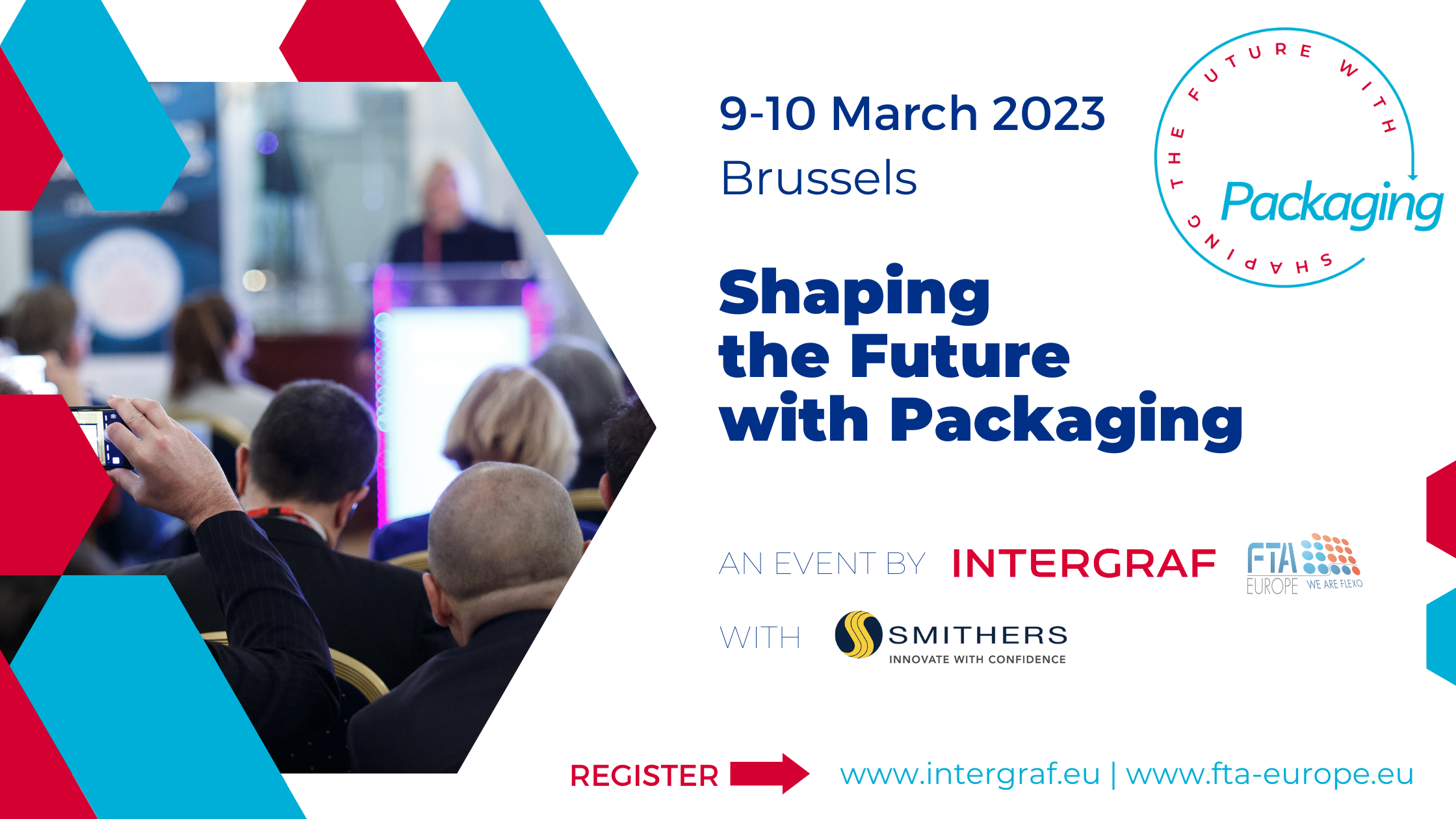 Intergraf interviewed Tom Hallam from Smithers about the latest packaging trends affecting the European market. Tom will speak about these at Shaping the Future with Packaging conference on 9 and 10 March 2023. Register here for the event.
Intergraf interviewed Tom Hallam from Smithers about the latest packaging trends affecting the European market. Tom will speak about these at Shaping the Future with Packaging conference on 9 and 10 March 2023. Register here for the event.

What do you do at Smithers?
“My job title is Project Director, Packaging Consultancy which means that I am responsible for the entire process of a packaging consultancy project. This starts with a draft proposal which is then fine tuned to meet the exact requirements of the client. Once the project is started I oversee all its elements, from the primary and secondary research to the final delivery. Our clients range from global brand owners in the B2C sector to material suppliers and technology developers in the B2B sector”.
What are the benefits for Smithers of working with Intergraf?
“Our clients turn to us for credible market data to help make decisions. Clients trust our data because of our technical knowledge, market estimating expertise, network of experts and our deep connections within the industries we serve. Working closely with many credible associations such as Intergraf – as we have done for many years – helps keep us connected to the industry and provides an additional sense check on our insights”.
The packaging industry has been growing and undergoing a lot of change. What do you see as the main trends?
“The key trends in Europe are: regulation/legislation (packaging and packaging waste regulation in particular), sustainability, increased consumer knowledge on environmental issues and packaging, E-commerce growing faster than traditional retail, digitalization offering a wide range of opportunities and the increased need for convenience in the food service packaging sector”.
How do you see the developments in printing technology used in packaging printing?
“While there is a perception of print having a tough time, it is actually a highly competitive and dynamic business, particularly in the packaging sector. A big factor is the trend towards shorter run lengths, which is one of the factors that is driving the growth in digital printing. When producing shorter runs, set-up cost differences can contribute significantly to variations in the cost per print between printing processes.
Clearly, there is a huge amount of excitement in the development of digital printing – both inkjet and electrophotography. The early adopters of digital are getting to grips with the workflow and logistics implications of handling many more short runs. Packaging converters are working to implement major improvements in upstream order processing, design and prepress; and downstream finishing and logistics.
There are also exciting developments happening in the analogue printing space. Developments aimed at improving the short run performance of offset litho, flexo and gravure include fixed gamut printing, automatic color correction and registration, streamlined plate and cylinder preparation, robotic plate mounting and many others”.
What are the challenges for packaging producers/printers?
“For packaging suppliers, the challenges are influenced by the end-use sectors they are supplying into, the packaging formats they are producing, and the raw materials they typically use (plastic or fibre-based packaging). The challenges they face are very much linked to the packaging market trends and drivers. At a macro level there are 3 other factors that are currently having a huge impact on raw material suppliers and packaging converters in Europe: spiraling inflation, unprecedented energy price increases and the ongoing impact from the war in Ukraine. Another big challenge affecting both printers and packaging suppliers is the continued supply chain disruption and impact on raw material prices”.
What are the opportunities?
“The biggest trends in packaging today are in sustainability and e-commerce – these are creating huge opportunities. Digital printing has benefits when it comes to personalisation as individual print designs can be made. This can be achieved when the brand owner/retailer has a well-developed customer database (‘big data’). When it comes to flexo the improvements in board qualities, such as white top kraftliners, means that brands can implement what is being termed ‘Packvertising’ – i.e. printing their corrugated boxes with high quality images to promote the brand and enhance the unboxing experience”.
How can packaging producers/printers prepare for the future?
“The market is changing radically. The best way to prepare for the future is to be aware of these shifts and trends, to use this insight to identify the most profitable market niches that you can serve, and then utilizing the best of the available technology, people and processes. A key part of this is understanding your customer – and your customer’s customer.
Those who see challenges as opportunities are the ones who will win in the long term but to achieve success suppliers will need to invest in the tools and processes to make this happen – best in class market insight, employing creative/innovative thinkers, encouraging cross business and 3rd party collaboration. Nothing will happen overnight, but strategic planning for the next 2-5 years is crucial to ensure that the business model remains competitive in the long term”.






















